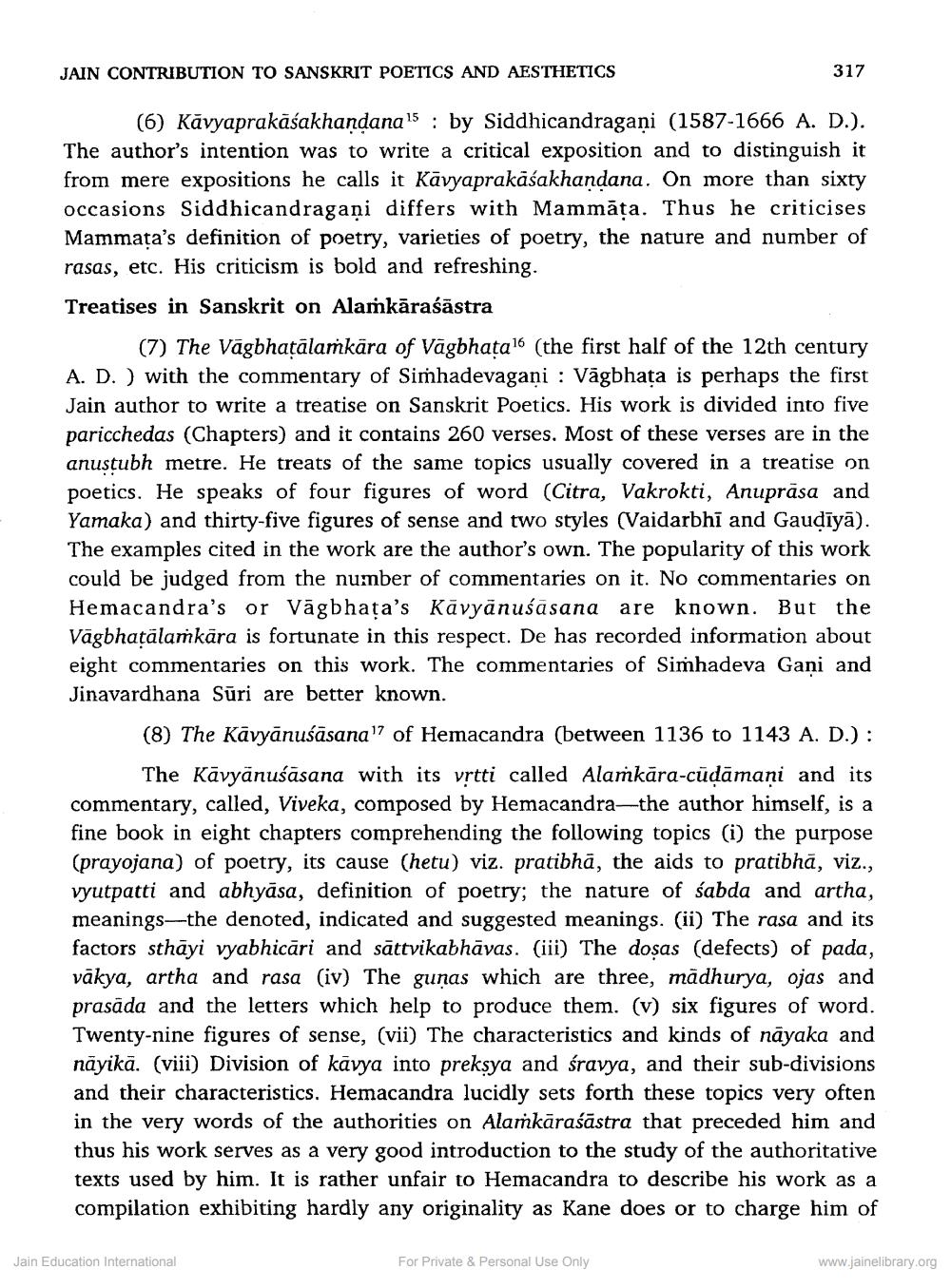________________ JAIN CONTRIBUTION TO SANSKRIT POETICS AND AESTHETICS 317 (6) Kavyaprakasakhandana 15 : by Siddhicandragani (1587-1666 A. D.). The author's intention was to write a critical exposition and to distinguish it from mere expositions he calls it Kavyaprakasakhandana. On more than sixty occasions Siddhicandragani differs with Mammata. Thus he criticises Mammata's definition of poetry, varieties of poetry, the nature and number of rasas, etc. His criticism is bold and refreshing. Treatises in Sanskrit on Alamkarasastra (7) The Vagbhatalamkara of Vagbhata 16 (the first half of the 12th century A. D. ) with the commentary of Simhadevagani : Vagbhata is perhaps the first Jain author to write a treatise on Sanskrit Poetics. His work is divided into five paricchedas (Chapters) and it contains 260 verses. Most of these verses are in the anustubh metre. He treats of the same topics usually covered in a treatise on poetics. He speaks of four figures of word (Citra, Vakrokti, Anuprasa and Yamaka) and thirty-five figures of sense and two styles (Vaidarbhi and Gaudiya). The examples cited in the work are the author's own. The popularity of this work could be judged from the number of commentaries on it. No commentaries on Hemacandra's or Vagbhata's Kavyanusasana are known. But the Vagbhatalamkara is fortunate in this respect. De has recorded information about eight commentaries on this work. The commentaries of Simhadeva Gani and Jinavardhana Suri are better known. (8) The Kavyanusasana"? of Hemacandra (between 1136 to 1143 A. D.): The Kavyanusasana with its vrtti called Alamkara-cudamani and its commentary, called, Viveka, composed by Hemacandra--the author himself, is a fine book in eight chapters comprehending the following topics (i) the purpose (prayojana) of poetry, its cause (hetu) viz. pratibha, the aids to pratibha, viz., vyutpatti and abhyasa, definition of poetry; the nature of sabda and artha, meanings--the denoted, indicated and suggested meanings. (ii) The rasa and its factors sthayi vyabhicari and sattvikabhavas. (iii) The dosas (defects) of pada, vakya, artha and rasa (iv) The gunas which are three, madhurya, ojas and prasada and the letters which help to produce them. (v) six figures of word. Twenty-nine figures of sense, (vii) The characteristics and kinds of nayaka and nayika. (viii) Division of kavya into preksya and sravya, and their sub-divisions and their characteristics. Hemacandra lucidiy sets forth these topics very often in the very words of the authorities on Alamkarasastra that preceded him and thus his work serves as a very good introduction to the study of the authoritative texts used by him. It is rather unfair to Hemacandra to describe his work as a compilation exhibiting hardly any originality as Kane does or to charge him of Jain Education International For Private & Personal Use Only www.jainelibrary.org




